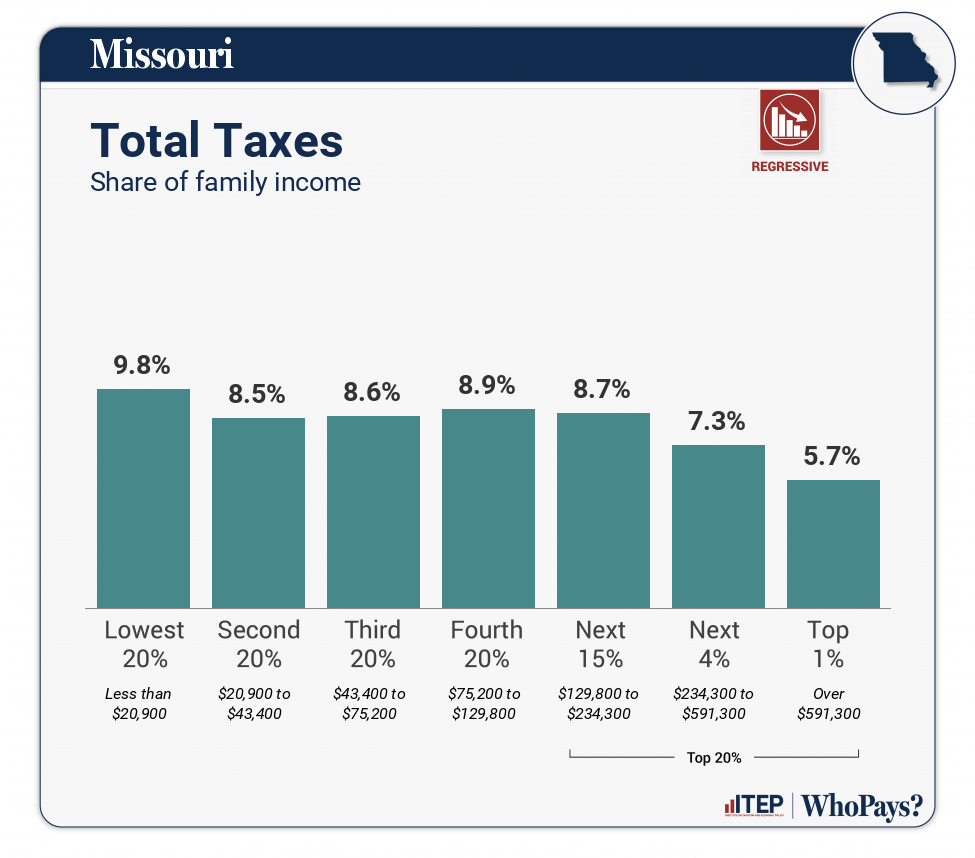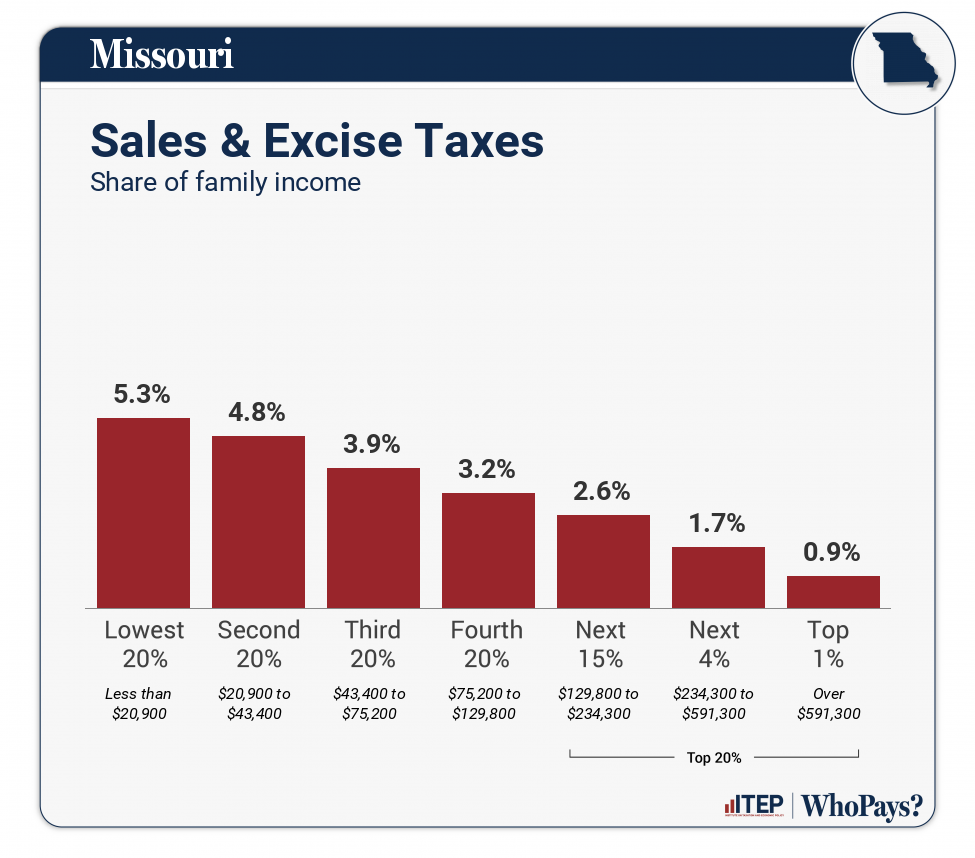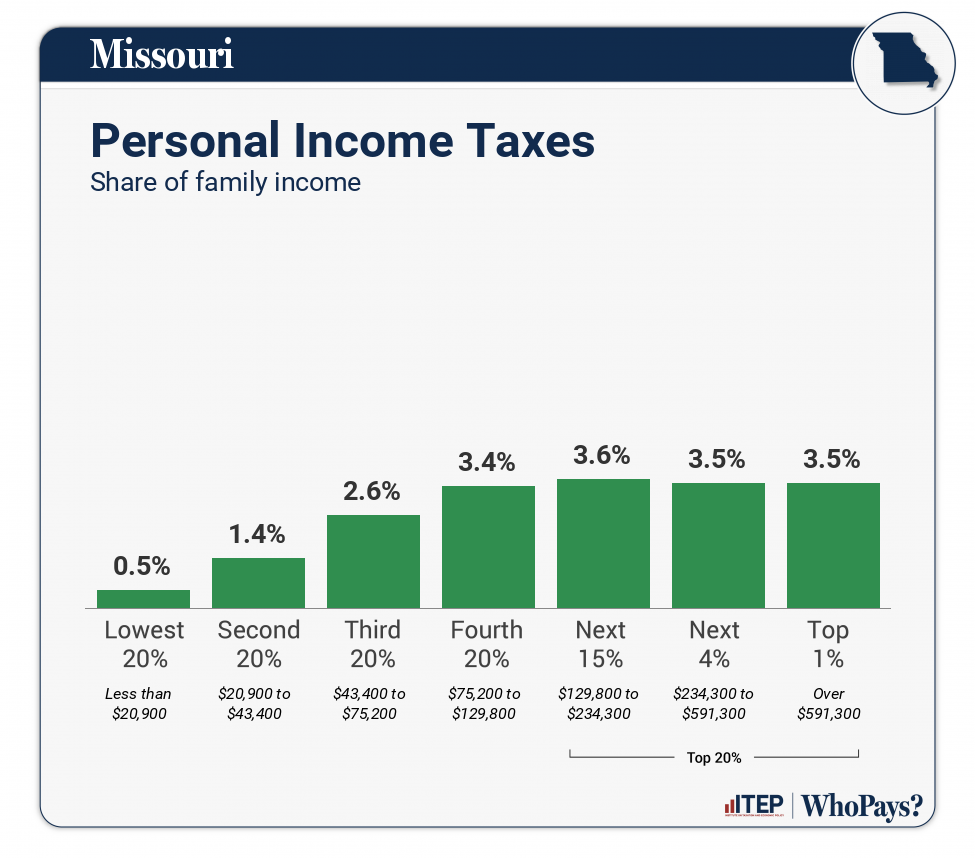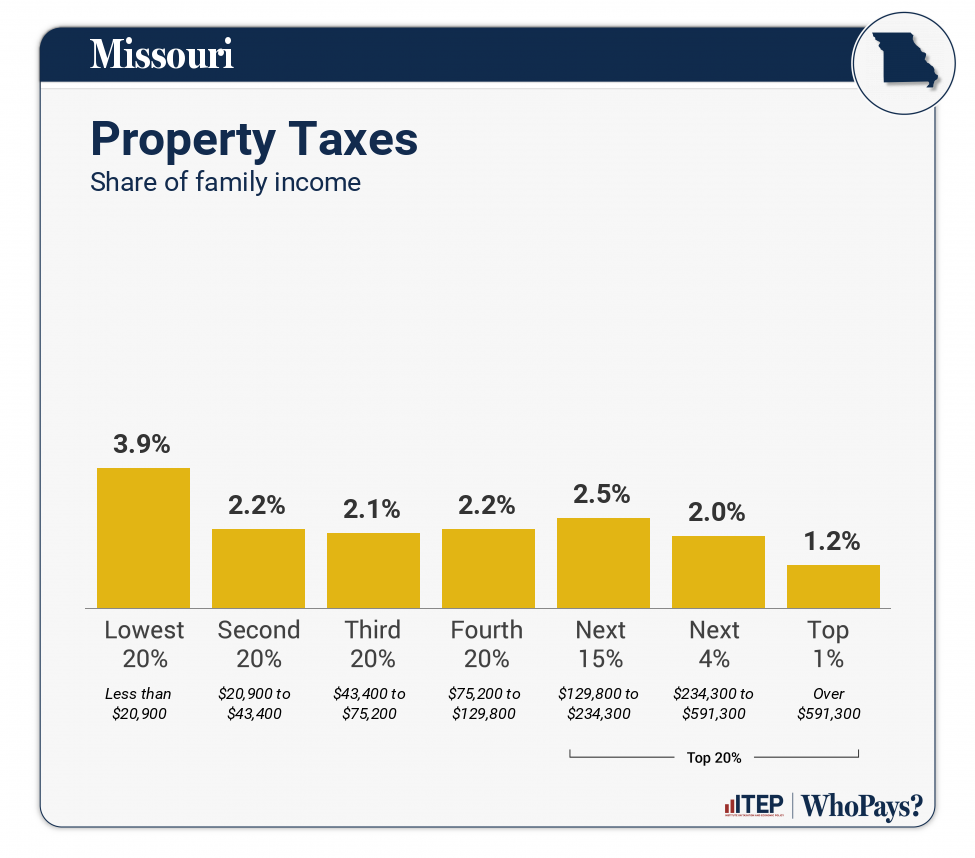Missouri: Who Pays? 7th Edition

Missouri
Download PDF
All figures and charts show 2024 tax law in Missouri, presented at 2023 income levels. Senior taxpayers are excluded for reasons detailed in the methodology. Our analysis includes nearly all (98 percent) state and local tax revenue collected in Missouri. These figures depict Missouri’s top income tax rate at 4.8 percent. The top rate is set to decrease to 4.5 percent. As seen in Appendix E, this will decrease the top fifth’s overall tax rate by 0.2 percentage points and cause the state to move 1 spot in the ITEP Inequality Index rankings, from 31st to 30th most regressive.
State and local tax shares of family income
| Top 20% | |||||||
| Income Group | Lowest 20% | Second 20% | Middle 20% | Fourth 20% | Next 15% | Next 4% | Top 1% |
| Income Range | Less than $20,900 | $20,900 to $43,400 | $43,400 to $75,200 | $75,200 to $129,800 | $129,800 to $234,300 | $234,300 to $591,300 | Over $591,300 |
| Average Income in Group | $12,100 | $31,000 | $58,400 | $100,800 | $163,600 | $339,900 | $1,688,600 |
| Sales & Excise Taxes | 5.3% | 4.8% | 3.9% | 3.2% | 2.6% | 1.7% | 0.9% |
| General Sales–Individuals | 3% | 2.9% | 2.4% | 2% | 1.6% | 1% | 0.3% |
| Other Sales & Excise–Ind | 1.2% | 0.9% | 0.6% | 0.5% | 0.3% | 0.2% | 0.1% |
| Sales & Excise–Business | 1.1% | 0.9% | 0.8% | 0.7% | 0.6% | 0.5% | 0.5% |
| Property Taxes | 3.9% | 2.2% | 2.1% | 2.2% | 2.5% | 2% | 1.2% |
| Home, Rent, Car–Individuals | 3.5% | 2% | 2% | 2% | 2.2% | 1.7% | 0.5% |
| Other Property Taxes | 0.3% | 0.2% | 0.2% | 0.2% | 0.2% | 0.3% | 0.7% |
| Income Taxes | 0.5% | 1.4% | 2.6% | 3.4% | 3.6% | 3.5% | 3.6% |
| Personal Income Taxes | 0.5% | 1.4% | 2.6% | 3.4% | 3.6% | 3.5% | 3.5% |
| Corporate Income Taxes | 0% | 0% | 0% | 0% | 0% | 0% | 0% |
| Other Taxes | 0.1% | 0.1% | 0.1% | 0.1% | 0.1% | 0% | 0.1% |
| TOTAL TAXES | 9.8% | 8.5% | 8.6% | 8.9% | 8.7% | 7.3% | 5.7% |
| Individual figures may not sum to totals due to rounding. | |||||||
ITEP Tax Inequality Index
ITEP’s Tax Inequality Index measures the effects of each state’s tax system on income inequality. According to this measure, Missouri has the 31st most regressive state and local tax system in the country. Income disparities are larger in Missouri after state and local taxes are collected than before. (See Appendix B for state-by-state rankings and the report methodology for additional detail.)
Tax features driving the data in Missouri
|
Graduated personal income tax structure; however top rate kicks in at $8,449 so virtually flat
Provides an Earned Income Tax Credit (EITC)
|
|
|
Mismeasurement of home value in the property tax tilts in a regressive direction
No refundable income tax credits to offset sales, excise, and property taxes
State sales tax base includes groceries, though taxed at a lower rate
Does not use combined reporting as part of its corporate income tax
Partial income tax deduction for federal income taxes paid
Income tax exclusion for pass-through business income
Does not levy a tax on estates or inheritances
Local sales tax bases include groceries
|




